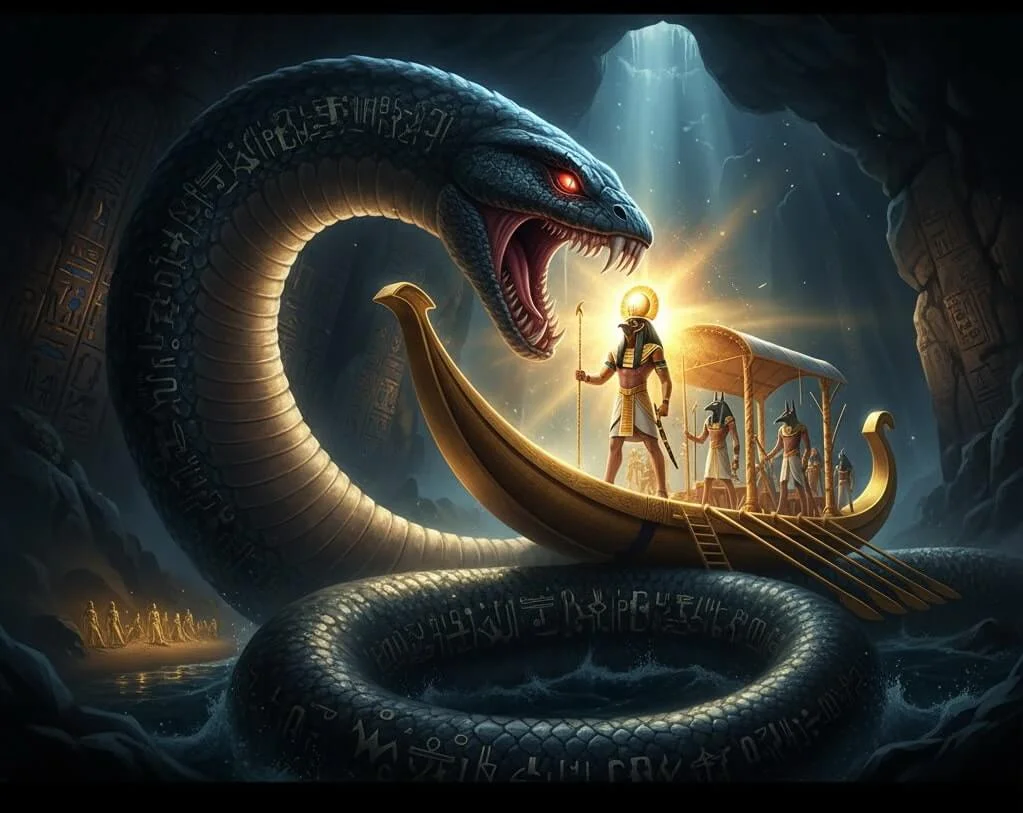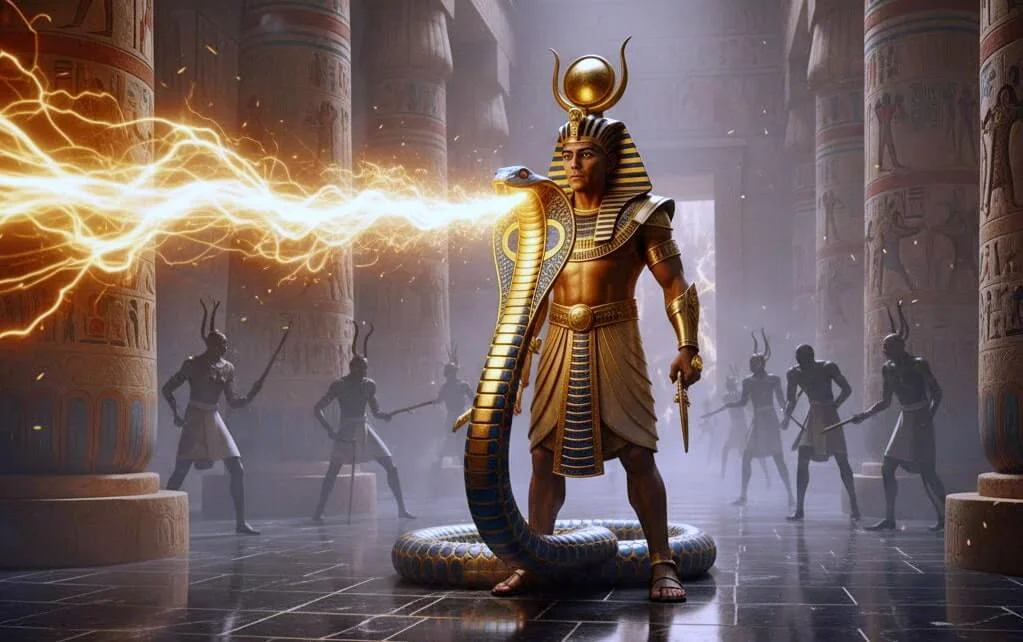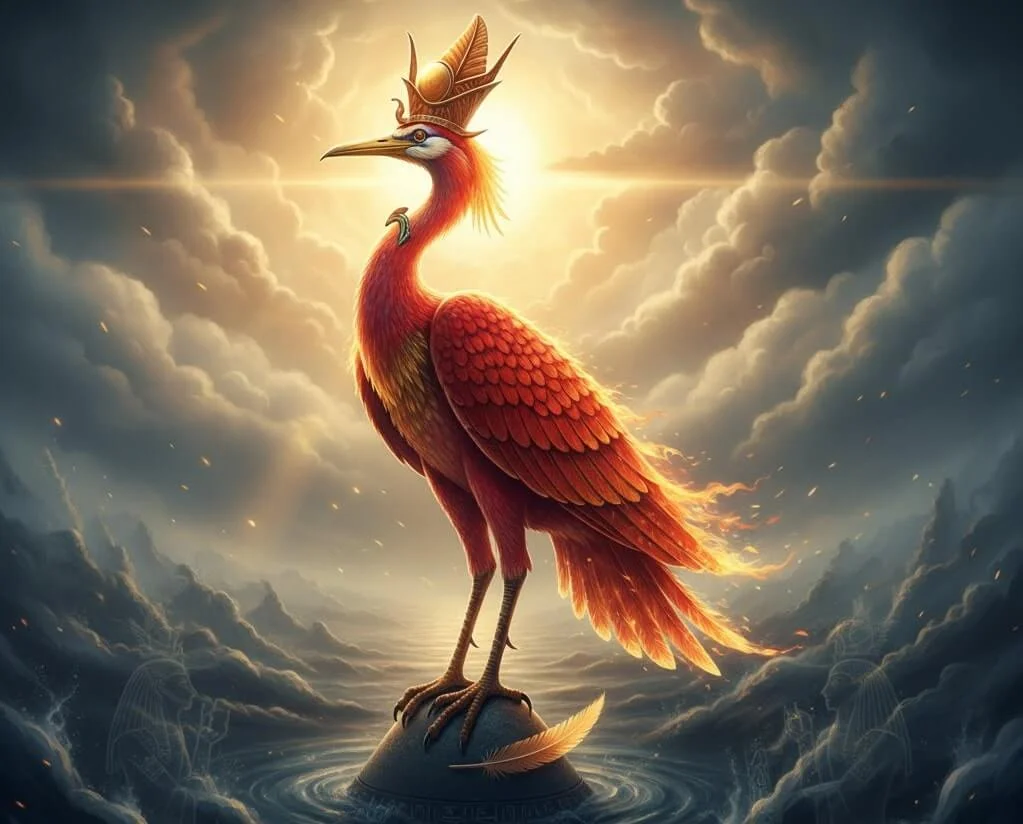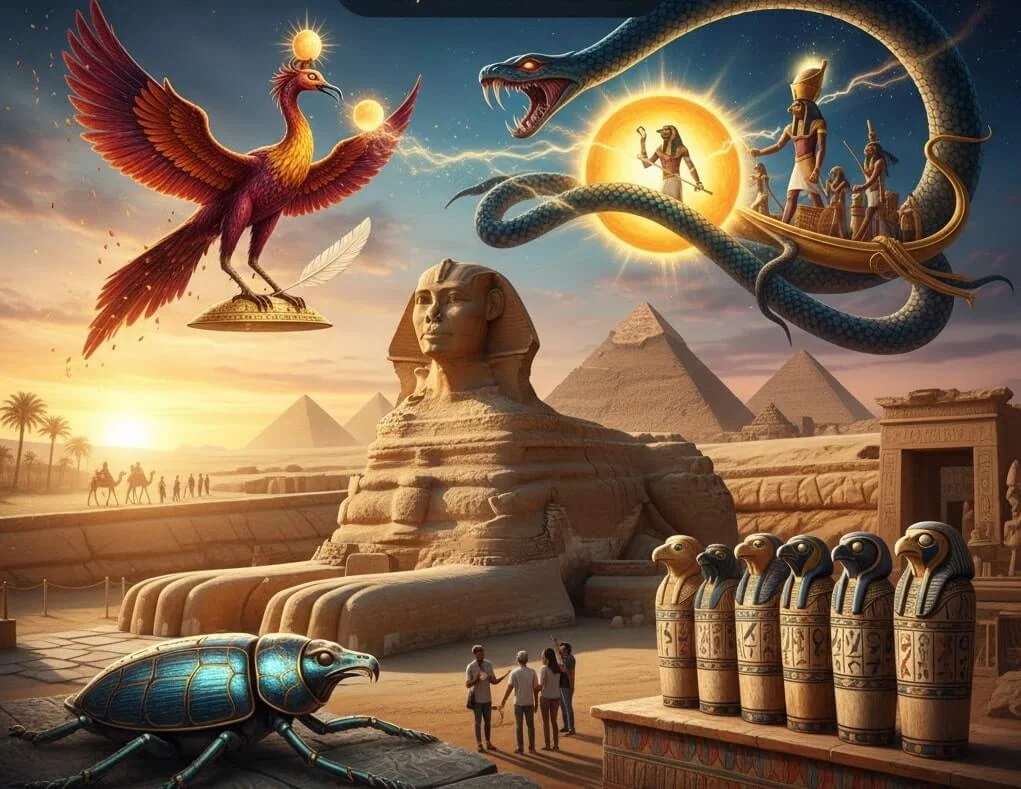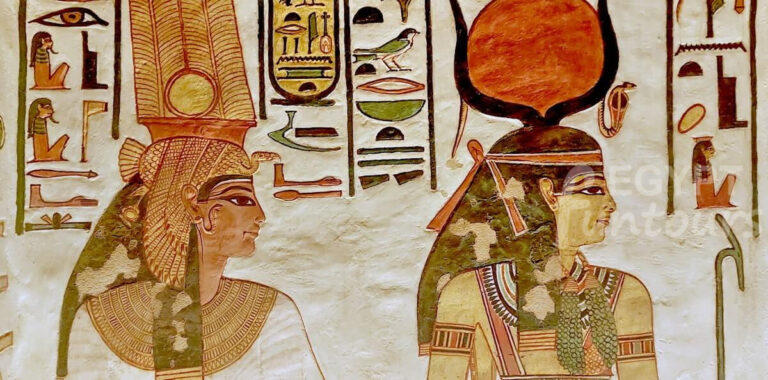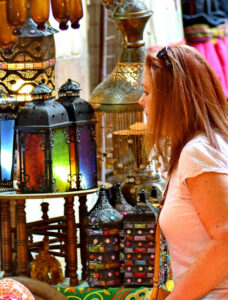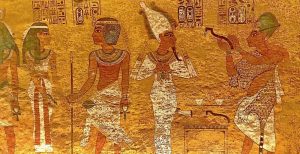Ancient Egyptian Mythical Creatures
The rich tapestry of Ancient Egyptian mythical creatures is unlike any other in the world. Far from mere fantasy, these beings drove Egyptian religion, embodying the cosmic forces of Ma’at (order, truth) and Isfet (chaos). They acted as guardians, terrifying demons of the afterlife, and powerful symbols of the Pharaoh’s divine authority. You must understand these powerful figures to appreciate the monuments you will encounter on any trip to Egypt.
This complete guide takes you deep into the fascinating myths behind the most famous legendary creatures of Egypt, explaining their hybrid forms and the profound stories behind their existence. Prepare to discover the monsters and gods that shaped one of history’s greatest civilizations!


